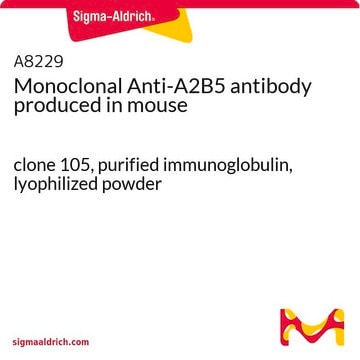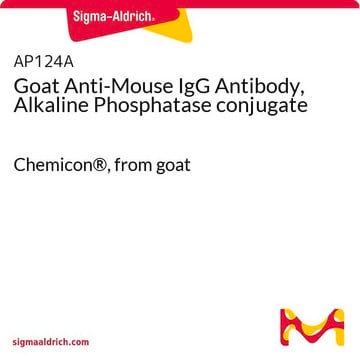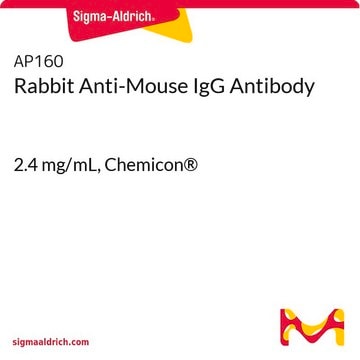MAB312R
Anti-A2B5 Antibody, clone A2B5-105
clone A2B5-105, Chemicon®, from mouse
Synonyme(s) :
Neuron Cell Surface Antigen
About This Item
Produits recommandés
Source biologique
mouse
Niveau de qualité
Forme d'anticorps
saturated ammonium sulfate (SAS) precipitated
Type de produit anticorps
primary antibodies
Clone
A2B5-105, monoclonal
Réactivité de l'espèce (prédite par homologie)
mammals
Fabricant/nom de marque
Chemicon®
Technique(s)
flow cytometry: suitable
immunocytochemistry: suitable
immunofluorescence: suitable
immunohistochemistry: suitable
Isotype
IgM
Conditions d'expédition
dry ice
Modification post-traductionnelle de la cible
unmodified
Description générale
Spécificité
Neurofibrillary tangles in the post-mortem brain tissue of patients with a confirmed diagnosis of Alzheimer′s disease (Majocha et al., 1989)
Neurons of chicken retina, brain, spinal cord, and dorsal root ganglia (Schnitzer & Schachner, 1982; Eisenbarth et al., 1979).
Rat striatal nerve terminals [synaptosomes (Wolf & Kapatos, 1989)].
Neuroblastoma cells in man (Oppedal et al., 1989; Coakham et al., 1985).
Rat insulinoma cells and pancreatic islets cells (Shimizu et al., 1983; Bartholomeusz et al., 1989).
Human and rat thymic epithelial cells (Haynes et al., 1988).
Cells involved in gliogenesis (Bottenstein et al., 1988; Suzumura & Slerberg, 1989).
Oligodendrocytes and astrocytes, type II (Dubois-Dalcq et al., 1990).
Immunogène
Application
Complement-mediated cytotoxicity (Eisenbarth et al., 1979)
Flow cytometry: live cells {Maric, D. et al. (2000) Cerebral Cortex 10:729-747}.
Optimal working dilutions must be determined by end user.
Neuroscience
Neuronal & Glial Markers
Forme physique
Stockage et stabilité
Remarque sur l'analyse
Type II astrocytes, human neural progenitors
Autres remarques
Informations légales
Clause de non-responsabilité
Vous ne trouvez pas le bon produit ?
Essayez notre Outil de sélection de produits.
Code de la classe de stockage
12 - Non Combustible Liquids
Classe de danger pour l'eau (WGK)
WGK 2
Point d'éclair (°F)
Not applicable
Point d'éclair (°C)
Not applicable
Certificats d'analyse (COA)
Recherchez un Certificats d'analyse (COA) en saisissant le numéro de lot du produit. Les numéros de lot figurent sur l'étiquette du produit après les mots "Lot" ou "Batch".
Déjà en possession de ce produit ?
Retrouvez la documentation relative aux produits que vous avez récemment achetés dans la Bibliothèque de documents.
Notre équipe de scientifiques dispose d'une expérience dans tous les secteurs de la recherche, notamment en sciences de la vie, science des matériaux, synthèse chimique, chromatographie, analyse et dans de nombreux autres domaines..
Contacter notre Service technique








